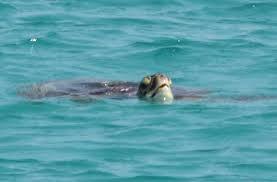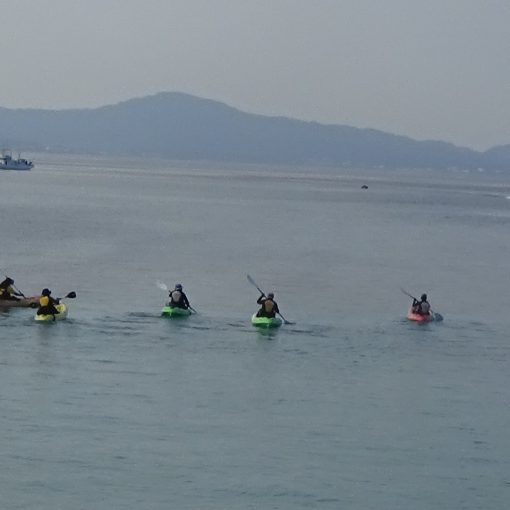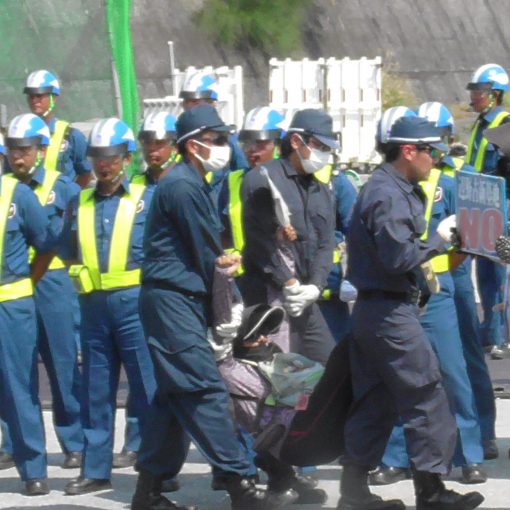Among the structures that violate the U.S. Unified Facilities Criteria for military airfields around the new base in Henoko, only iron towers received a relocation budget. The new budget allocated 5.618 billion yen for fourteen towers in Toyohara to go underground.
The U.S. Unified Facilities Criteria specify that the building height along 2286 meters runway must be below 45.72 meters for safety reasons and that those above 45.72meters be removed.
Since the Henoko New Base runways are 8.8 meters above the sea level, height restrictions will be 54.52 meters above sea level. When the 54.52 meters limit is applied, a total of 358 structures in the wards of Henoko and Toyohara would be in height violation; the Okinawa Technical College, Kube Elementary and Junior High Schools, four condominium buildings, and 67 private houses.
The iron towers go underground to be safe, but how about schools and private residences? All Okinawa Coalition have kept questioning this to the Okinawa Defense Bureau, who reported that the Pentagon had determined that an exception rule applies here that some structures may be allowed to surpass the height restrictions set for the U.S. military for safety purposes. The U.S.’s double standard, which blatantly places the military base’s operation ahead of residents’ lives, will definitely increase criticism from the local people. In the Toyohara ward alone, 1,500 people live in buildings and houses which do not meet the safety standard but were exempted.


(Infront of the Camp Schwab Gate)
Approximately 40 people, including the Okinawa Heiwa Shimin Rennraku-kai (Okinawa Peace Forum), started to sit in at 8:30 in the morning. Women’s singing and dancing energized the scene. A caravan of concrete mixer trucks showed up, which could mean the resumption of the seawall construction.
Of 242 cars that came to bring in the construction materials, 137 were concrete mixer trucks today.
We asked for comments from 2 participants in the protest. Ms. Nakazato Suzuyo (81 years old), one of All Okinawa Coalition co-directors, expressed her anger. “I am enraged that the base construction works are going on while the people are suffering from the COVID-19 pandemic. It is unnecessary and not essential at all at this time of national emergency. It’s a crime against humanity,” she said. Ms. Sato Akemi (69 years old), who likes dancing, said, “I learned today that some activities are going on to support day laborers who had lost their jobs due to the COVID-19. We should use tax money to help them. Spending on the base construction is just a waste of our tax money. I stop the construction of this new base by any means available.”


(Ryukyu Cement Awa Pier)
At the pier entrance and exit, approximately 30 people, including the Nanbu Shimagurumi (Southern chapter of Island-Wide Conference), protested against the dump trucks bringing in earth and sand. The Ryukyu Cement Co. has kept a coal carrier ship docked at the pier since the beginning of the year, and the construction crew could not use the dock to ship out earth and sand today. The trucks delivered earth and sand from the quarry until around 8 pm. The protest rally often caused congestion of dump truck traffic in the premises.
Just like yesterday, nearly 1,000 dump trucks brought in the earth and sand.



(Motobu Shiokawa Pier)
For the first time since Dec 24 of last year, the construction crew shipped out the earth and sand. In the cold, wind blowing, five Motobu Shimagurumi (Motobu chapter of Island-Wide Conference) kept protesting until 4:30 pm by walking across the road very slowly when trucks were coming. The construction crew loaded 400 truckloads of earth and sand to 3 barges with a rampway.
Three puppies were moving around in the parking area. Their mother might be the one who gave birth to 3 babies two years ago. I wish somebody would adopt these newborns this time again.


Number of dump trucks to date and percentage against the total
The estimation calculated on the basis of the number of ruckloads serves only as a reference.
Number of dump trucks which made delivery from December 2018 to the end of December 2020 302,705(3.746%)
| Jan,2(Sat) | 4(Mon) | 5(Tue) | 6(Wed) | 7 (Thu) | 8(Fri) | |
| Awa | 0 | 0 | 0 | 0 | ||
| Shiokawa | 0 | 0 | 0 | 400 |
| Number of dump trucks ※ |
Weightt of earth/sand
※① |
Converted to volume
※② |
Volume per Total
※③ |
| 303,105 | 1,515,525 t | 757,763㎥ | 3.751 % |
※ Cumulative since Dec. 1, 2019
※① Calculated by assuming that the average truckload per dump truck would be 5 tons
※② Calculated by assuming that a specific weight of soil/sand set to be 2
※③ Percentage against 20.200.000m3, the total volume of earth and sand required for the landfill.





